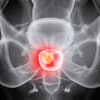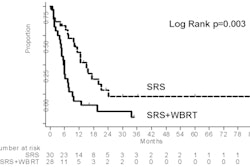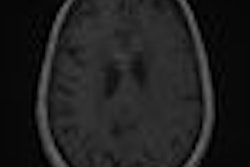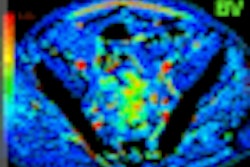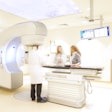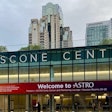Breast reconstruction is a subject of anxiety and concern for women who face the loss of a breast. The problem is even more pronounced for women receiving radiation therapy as part of their treatment, as experts disagree on whether radiation should be delivered before or after reconstructive surgery.
The two main breast reconstruction techniques are tissue expander and implant reconstruction (TE/I), in which healthy breast tissue is stretched over an implant, and autologous tissue reconstruction (ATR), in which a flap of tissue from another part of the patient's body is grafted onto the breast to cover the implant. The problem is that radiation therapy can cause major side effects in women who receive either approach.
Consensus does not exist today among breast oncologists, breast surgeons, plastic surgeons, and radiation oncologists about treatment planning for breast cancer patients requiring a mastectomy, desiring breast reconstruction, and possibly or definitely needing radiation therapy. Some experts argue that radiation therapy can be performed before breast reconstruction if certain precautions are taken; others, however, believe that radiation treatments should always be postponed regardless of which technique is used.
Lack of current data
Part of the reason for the disagreement is that few clinical studies have been conducted evaluating long-term outcomes for a sample size of patients who had radiation therapy immediately following breast reconstruction.
For more than four years, no long-term outcomes study has been published with a patient cohort larger than 50 subjects. The most recent was a study conducted in 2003 by Dr. Peter Cordeiro, chief of the plastic and reconstructive surgical service of Memorial Sloan-Kettering Cancer Center in New York City, and colleagues, who evaluated the three-year outcomes of 68 irradiated patients and a control group of 75 nonirradiated patients.
Published in Plastic and Reconstructive Surgery (March 2004, Vol. 113:3, pp. 877-81), the study assessed the aesthetic outcomes, capsular contracture, and satisfaction of these patients, all of whom had TE/I reconstruction between January 1995 and June 2001.
The study found that while patients receiving radiation therapy after breast reconstruction had higher levels of complications, such as capsular contraction, only 20% were not satisfied with the aesthetic outcome. Moreover, 72% of the irradiated patients would choose a TE/I reconstruction again.
Statistical findings included the following:
|
Based on these findings, the researchers suggested that TE/I reconstruction was an acceptable surgical option even when followed by postoperative radiotherapy.
In an article providing an overview of breast reconstruction after surgery for breast cancer, published in the October 9, 2008, issue of the New England Journal of Medicine (Vol. 359, pp. 1590-1601), Cordeiro described the need for radiation therapy of some patients as an "area of uncertainty," representing a "unique set of challenges to the reconstructive surgeon." He pointed out that irradiation after breast reconstruction has an unpredictable effect on the outcome of both TE/I- and ATR-based reconstruction. Cordeiro noted that many plastic surgeons will not immediately perform reconstruction using either technique because of the potential for significant capsular contracture in TE/I reconstructions and severe fibrosis or atrophy of the autologous tissue flap in ATR procedures.
"Satisfactory planning for reconstructive surgery in the patient who has received or will receive radiotherapy requires consideration of a range of issues, and the best approach for an individual patient is not always clear," Cordeiro wrote.
However, for a hypothetical patient described in the study who would need radiation therapy, Cordeiro recommended immediate reconstruction using a tissue expander, which would be replaced by a permanent implant during radiation therapy, with the option of a glutal flap reconstruction after its completion.
Eleven physicians from Germany, the U.K., and the U.S. disagreed with Cordeiro's recommendations for his hypothetical patient. They stated in letters to the editor that immediate reconstructive surgery interacts unfavorably with postmastectomy radiation therapy (NEJM, January 22, 2009, Vol. 360, pp. 418-421).
Three radiation oncologists from Institut Curie in Paris pointed out that radiation therapy could be delayed, anatomical changes induced by implant-based procedures create technical difficulties, and radiation treatment planning is technically altered by reconstructive surgery. Major compromises in terms of optimal chest-wall coverage, avoidance of the heart, minimization of the radiation dose to the lung, and treatment of the ipsilateral internal mammary lymph nodes could lead to potential uncertainties in the efficacy of postmastectomy radiation therapy, according to these oncologists.
New long-term outcomes study
Meanwhile, a clinical study of a larger patient cohort than the Memorial Sloan-Kettering study was published in the International Journal of Radiation Oncology, Biology, Physics (November 2008, Vol. 72:3, pp. 859-865). A research team led by Dr. Jigna Desai Jhaveri, at the time a radiation oncologist at Long Island Radiation Therapy in Garden City, NY, analyzed the long-term complication rates and cosmetic results of TE/I and ATR. Patients who had the ATR reconstruction technique had no serious complications versus 33% of the patients who had the TE/I reconstruction.
The study compared the outcomes of 23 patients who had ATR reconstruction and 69 patients who had TE/I reconstruction between January 1998 and December 2005. Both groups of patients had their reconstruction procedures followed by radiation therapy.
The patients who had ATR were slightly younger than those who had TE/I reconstruction (mean age, 46 versus 54 years). More had a history of smoking (43.5% versus 25.7%).
All patients were treated with external-beam radiation therapy to the reconstructed breast and chest wall using tangential fields, and to a supraclavicular field using an obliqued photon field. Doses were uniformly delivered at 1.8 Gy per fraction to a total dose of 50.4 Gy to the chest wall/reconstructed breast and 45 Gy to the supraclavicular region. The mastectomy scar was boosted with 6 MeV electrons in 17 patients (16 with implants, one with autologous tissue reconstruction). Twenty patients (13 with implants, seven with autologous tissue reconstruction) received 4,500 cGy to the axilla.
Patients were followed up by telephone from three months to more than eight years after radiation therapy, with a median average follow-up time of 38 months. Complications were classified as:
- Grade 1: No discomfort
- Grade 2: Discomfort affecting activities of daily living
- Grade 3: Surgical intervention or intravenous antibiotics required
- Grade 4: Removal or replacement of the reconstruction
None of the patients who had ATR prior to radiation therapy experienced grade 3 or 4 complications, whereas 33% of the patients who had TE/I reconstruction followed by radiation therapy did. Patient satisfaction with cosmesis was significantly higher for ATR as well: 82.6% for the ATR patients compared with 51% for TE/I followed by radiation.
Of the nine patients who experienced grade 3 complications, seven required surgical intervention. Fourteen patients had grade 4 complications, and removal of the implant was required for all of them. Six had severe capsular contracture, four had infection, and three had a rupture. One of the patients developed diffuse local recurrence, and for this reason had to have the implant removed.
Based on this information, Jhaveri and colleagues believe that ATR is better tolerated than TE/I in the long term for patients who also undergo radiation therapy. Jhaveri also pointed out that, unlike the Memorial Sloan-Kettering study, the patients in the NEJM study were treated in a community setting by many different breast surgeons and plastic surgeons from various hospitals located in Long Island, NY.
Guidelines and recommendations
The 2009 Practice Guidelines in Oncology from the National Comprehensive Cancer Network (NCCN) recommend that ATR occur after radiation therapy because of reported loss in reconstruction cosmesis. When TE/I reconstruction is used, immediate rather than delayed reconstruction is recommended to avoid tissue expansion of radiated skin flaps, but the NCCN warns that there is an increased rate of capsular contracture.
The NCCN also warns that tissue expansion of irradiated skin can result in a significantly increased risk of capsular contracture, malposition, poor cosmesis, and implant exposure. The NCCN also notes that the use of tissue expanders/implants is relatively contraindicated in the previously radiated patient.
Getting advice
Women who seek treatment at cancer centers may benefit from the fact that radiographers, breast oncologists, breast surgeons, plastic surgeons, and radiation oncologists confer with each other about a case. At the University of Colorado Cancer Center in Aurora, for example, the facility's Breast Cancer Program is a multidisciplinary clinic that includes a plastic surgeon and a radiation oncologist. The facility recommends delayed reconstruction for any patient who may potentially need radiation therapy, according to breast specialist Dr. Virginia Borges, assistant professor of medical oncology.
The Kimmel Cancer Center of Johns Hopkins Hospital in Baltimore also uses a multidisciplinary approach. Lillie Schockney, administrative director of the breast center, advises that patients wanting reconstruction have a tissue expander placed as a space holder at the time of mastectomy, followed by ATR-based reconstruction. This procedure is what Cordeiro recommended for his hypothetical patient. However, she said that this was a generalization, and that all the potential treatment providers jointly participate in planning a patient's treatment.
Approximately one-third of the women who are diagnosed with breast cancer have a mastectomy, according to Cordeiro. In 2007, this represented approximately 59,500 women, of whom 57,102 had breast reconstruction, according to statistics from the American Society of Plastic Surgeons. No statistics are available for the number of women who had immediate breast reconstruction followed by radiation therapy.
By Cynthia E. Keen
AuntMinnie.com staff writer
February 2, 2009
Related Reading
Optimizing the method, moment for reconstructing the irradiated breast, October 26, 2006
Many women uncomfortable making breast surgery decisions, August 4, 2006
Complications common with postmastectomy breast reconstruction, December 20, 2005
Radiation therapy may affect implants used in breast surgery, August 22, 2000
Copyright © 2009 AuntMinnie.com

